











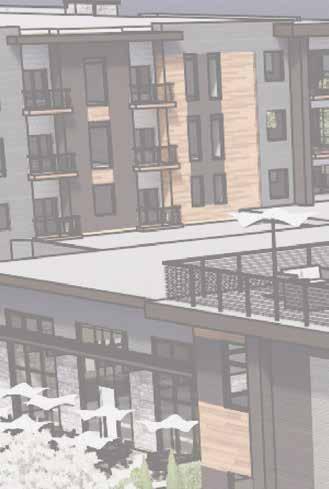
















































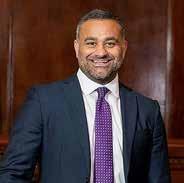
As you know, tort reform is an issue very near and dear to my heart, as well as the hearts of most Florida providers. The stars have aligned this year to bring about some tort reform opportunities; after 20 years, we may have an opportunity to get relief for businesses who pay thousands if not millions of dollars each year for insurance protection from frivolous lawsuits.
This session, we made enormous progress when we worked with Rep. Randy Maggard (R-54) and Sen. Colleen Burton (R-12) to file bills that contain language seeking to provide assistance to Florida’s ALF providers. FSLA, Argentum, FHCA and Leading Age banded together and asked legislators to pass legislation that would provide protections for senior living communities.
Our bills focus on reasonable, measured statutory changes based on existing statutory protections for nursing homes. For example, an important procedural safeguard would ensure initial claims are focused on those directly at fault. Rather than allowing trial attorneys to manufacture settlement leverage by including land and building owners and passive investors as named respondents, our bills propose relying on the existing statutory structure used by nursing homes, where the initial pleading is focused on a specified class of persons (e.g., the licensee, management company, managing employees, and direct caregivers). Additional people may subsequently be added upon a reasonable showing of a negligent breach of duty of care. Passive investors would have no liability.
Our proposed legislation also seeks to specify how claims for damages are heard and selected. Currently, trial attorneys often file a bare-bones affidavit asking for punitive damages, which can again manufacture settlement leverage. However, our bills would again look to the existing statutory structure for nursing homes. In those cases, a court would hold a hearing to determine whether there is sufficient admissible evidence, thus ensuring there is a reasonable basis to believe punitive damages would be warranted. We are also exploring the protections offered to hospitals, physicians and other health care providers to see what additional procedural safeguards would be appropriate for ALFs. For example, some of the addition items we are exploring include the medical negligence protections of limiting non-economic damages awardable to independent adult children; strengthening the expertise and experience requirements necessary to qualify as an expert witness; and prohibiting the use of previous, unrelated AHCA surveys to establish general wrongdoings unrelated to cases involving nursing homes and ALFs.
When we started this effort, we knew bills like these might take time. These measures will be fought tooth and nail by the trial bar because we are effectively challenging their ability to make a living off our situation. But when something is this important, you have to stand up and make a valiant effort. And that’s what we’re doing this legislative session because our providers have been telling us enough is enough.
Over the past few years, lawsuits and/or settlements have increased, and some have negatively impacted our residents. Our seniors should be able to age in place without being forced into a higher level of care because of a lawsuit. For example, a community may be obliged to discharge a resident who suffers from frequent falls, even if they offer to sign a waiver.
Trial attorneys have deep pockets and will spend countless dollars to thwart our efforts. Aside from lining their own pockets, trial attorneys’ tactics punish ALFs by driving insurance costs up with each forced settlement. This has the cyclical effect of leading to even more lawsuits and litigation costs, which can divert financial resources from resident care, staff salaries, quality programs and much more. It may even have the abhorrent effect of raising resident rates - meaning current residents may no longer be able to afford to stay in their current ALF homes.
In March, the legislature passed a general tort reform bill that would make substantive changes to how lawsuits are filed and litigated and allowing good claims to move forward. These reforms make our economy more competitive and Florida more affordable for our citizens and businesses. This bill doesn’t specifically help ALFs and may even drive unscrupulous attorneys to focus on ALFs for even more litigation since other avenues may no longer be available. Nevertheless, it is a step in the right direction and may ultimately help us to get legislation to benefit ALF providers.
Our commitment to our providers and members is that if we are not successful in passing our ALF tort reform legislation this session, we will keep coming back. It may take some time, but it will be time well spent.
“For years, Florida has been identified as an outlier on civil justice. Often referred to as a ‘judicial hellhole,’ the status of the state’s tort climate is a troubling cohort to the disasters not of our making, like hurricanes.”
Gail Matillo, MPA President & CEO
Jason Hand, Esq.
VP Public Policy and Legal Affairs
Sheri LeaJean
Director of Education & Sponsorships
Meredith Van Valkenburgh, MSAFA, CGB, CPM Project Director
Kristin Quirk Membership Director
Jimmie Fay Griffin, LPN Accounting & Membership Manager
John Henry Pitts, Jr. Business Development Director
Katherine Upton Operations Coordinator
Chair: Shelley Esden
President and CEO
Sonata Senior Living
Past Chair: Melinda Skirvin
Vice President
Five Star Senior Living
Past Chair Emeritus:
Mary Sue Patchett
Vice Chair: Jay Thomas
Asst. General Counsel – Ops
Atria Senior Living
Secretary: Joe Jedlowski
President
Distinctive Senior Living
Treasurer: Chris Callahan
Regional Director of Operations
Brookdale Senior Living
Parliamentarian: Robin Khanal, Esq. Quintarios, Prieto, Wood & Boyer, P.A. Industry Partner Committee Chair: Matt Depenbrock
Director of Business Development
Guardian Pharmacy
Education Committee Chair: Marisa Strain
Director of Quality Assurance
SRI Management
Membership Committee Chair: Krone Weidler
Principal Cadre Healthcare Realty Advisors
Editorial and Business Offices
2292 Wednesday St. Suite 1, Tallahassee, FL 32308 850-496-2562 | floridaseniorliving.org
Publisher: Gail Matillo gmatillo@floridaseniorliving.org
Executive Editor: Sheri LeaJean sleajean@floridaseniorliving.org
Creative Director: Katie Truelove ktcreative@me.com
Advertising & Editorial Submissions engage@floridaseniorliving.org
ENGAGE, Volume 1, Issue 4 is published quarterly by Florida Senior Living Association, 2292 Wednesday Street, Suite 1, Tallahassee, Florida, 32308. Florida Senior Living member companies receive subscriptions for communities as part of their membership. Free controlled subscriptions are also available to qualified individuals in the senior living business.
POSTMASTER, SEND ADDRESS CHANGES TO:
ENGAGE, 2292 Wednesday Street, Suite 1, Tallahassee, Florida, 32308. Printed in USA. Copyright 2022. ENGAGE will not be responsible for the return of any unsolicited manuscripts or photographs.
Copyright © 2023 Florida Senior Living Association. All rights reserved. No part of this publication may be reproduced or transmitted in any form – print, electronic, or otherwise – without written permission from Florida Senior Living Association.
For media inquiries and advertising information, contact engage@floridaseniorliving.org.
Featured on the cover: Leadership FSLA’s Inaugural Class decends upon the Capitol to meet with legislators and talk about topics important to assisted living in Florida.
Photo Credit: Katie Truelove | ktcreative, LLC
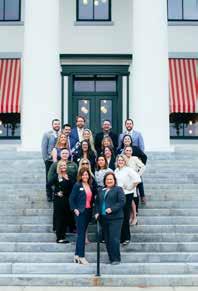








 by tara clayton , j . d .
by tara clayton , j . d .
In last month’s Engage, Florida Senior Living Association’s (FSLA) Jason Hand wrote an article on legislative initiatives promoted by FSLA to support sustainability for the industry. In highlighting FSLA’s legislative efforts, Jason references that there are an “ever increasing insurance and litigation costs” impacting senior living providers in Florida. In this article, I write to expand on these claim trends observed in Florida. Specifically, claim trends showing a continued deteriorating litigation environment.
When we talk about claims and lawsuits, we are generally talking about torts. I know what you’re asking right now – what is a tort? No, I’m not misspelling the delicious dessert. A tort, broadly defined, is when one individual or entity (a tortfeasor) civilly wrongs another (a claimant) and that action or omission results in losses or harm to the claimant. A common example of a tort would be a lawsuit by a visitor on the premises who alleges she fell in the parking lot because of a defect in the sidewalk.
In Florida, there are a number of studies depicting a concerning claim trend. In January 2023, the Institute for Legal Reform published a post about their November 2022 study on the economic impact of the current U.S. tort system.1
According to this study, “the cost of the [U.S.] tort system totaled $443 billion in 2020 . . . and $3,621 per household.”2 When looking at Florida households, the study found those costs totaled $5,065 per household - almost 40% higher than the average.3
The above economic findings show there is an impact of tort claims felt beyond the individual claimant and defendant; rather, there is a much broader impact on businesses and consumers within Florida. This ramification is seen in higher prices of goods, services, and even insurance. The senior living industry and the residents they serve are not immune to this and Jason’s article last month identified some of those significant statistics.
As to tort claim trends in senior living, there are a few studies from insurance carriers with portfolios in this industry. The 2022 CNA Aging Services Claim Report: 11th edition, shows an overall continued deteriorating litigation environment for senior living providers countrywide. However, in Florida, that trend is more concerning. The 2022 Oliver Wyman & Marsh General and Professional Liability Benchmark Report for Senior Living and Long-term Care Providers provides a synopsis of the picture in Florida. Specifically,
the data reviewed indicates that countrywide, Florida has the highest frequency4 of claims. The study’s analysis shows that in Florida for every 100 occupied units, there will be .696 claims with indemnity or expense for losses occurring in 2023. Notably, the next closest state is California with a frequency of .485 (30.32% lower than Florida). The study’s analysis shows that this high frequency indication is resulting in the highest loss rate5 for Florida as compared to other states and countrywide.
In response to these claim trends, Florida senior living operators have endured increasing insurance premiums and higher retentions in order to help moderate these cost increases. Further, this challenging market results in other providers, outside of the state, avoiding or limiting their presence in Florida. This creates volatility and sustainability concerns from an overall business perspective. Reforms are needed to address these concerns – similar to what we recently saw addressed by the legislature related to property insurance. As leaders in Florida senior living communities, it’s important to work with your executive teams and FSLA to understand ways you can be involved and ensure your voice is heard.
1 U.S. Chamber of Commerce Institute for Legal Reform, November 2022, “Tort Costs in America: An Empirical Analysis of Costs and Compensation of the U.S. Tort System” 2 U.S. Chamber of Commerce Institute for Legal Reform, January 5, 2023, “The U.S. Tort System Costs $443 Billion” 3U.S. Chamber of Commerce Institute for Legal Reform, November 2022, “Tort Costs in America: An Empirical Analysis of Costs and Compensation of the U.S. Tort System” 4 “Frequency” is defined as the number of claims estimated to close with payment per 100 occupied units. 5“Loss rate” is defined as the cost needed to pay indemnity or expense per occupied unit.
We are in an unprecedented time with low unemployment numbers, shrinking labor markets and needs of current staff changing. This makes staffing challenges an everyday issue for most operators and a projected issue without relief in sight. On the ten-year event horizon is another challenge; community occupancy numbers are projected to double. Mark this as a silver tsunami event.
The good news is if we start planning, investing, and training our current workforce, we can be prepared for the future. Last year FSLI through the Florida Legislature secured funding for CNAs in Florida’s Assisted Living Communities. The course covers training and the Prometric exam. The current funding is only until June 30th of this year, time is counting down. Again, FSLI through the Florida Legislature is working to procure this funding for the next State fiscal year, but there are no guarantees on this. Our current program is designed to provide an online course with interaction and a minimal ask of any community. What it provides for the community
The online courses are broken down into weekly course bit sizes requiring about 7.5 hours a week commitment from the learners. We use text messages to communicate with the students on clinical skills, and a half hour learner Zoom call for check in on Friday morning (it is recorded for later viewing for learners that cannot make the Zoom meeting). The mentor for each community is for communicating learner’s progress, learners that leave the community, and mailing textbooks. There is a once-amonth mentor call as a check-in and to take recommendations on improvements we can incorporate.
Statistical data shows employers that have career path development for staff have a higher retention rate. Employees loyalty increases as companies invest in them. The CNA training course provides the first steps in preparing our industry for the future. Together we must invest in our future, whether it
is mentoring, meeting skill gaps, or creating education pathways that lead to career advancement opportunities within their current communities or companies. While the funding is available, it can be used as a recruitment AND retention tool increasing the average employee’s length of employment. This will assist on the average employee’s length of employment. Use your next leaders to mentor the ones in the course. Build the skill sets that will be needed in future leadership.
If we were in a conference room, I would ask everyone that is struggling with recruiting, retention, and mission focused employees and I believe everyone would raise their hands. If I asked everyone that is participating in the free CNA training to raise their hands, it would be a small group of those who are preparing for the future of their communities and the future of the industry. If you want to raise your hand for a mechanism for retention, recruitment, loyalty, and career development for staff as a free CNA program, scan the QR Code on the next page or email me at meredith@floridaseniorliving.org.
 meredith van valkenburgh , msafa , cgb , cpm Project Director | Florida Senior Living Institute
meredith van valkenburgh , msafa , cgb , cpm Project Director | Florida Senior Living Institute

is a mechanism for retention, recruitment, loyalty, and career path development for staff.
Training includes an online program with course materials, clinical test skills preparation, and paid Prometric test. Each facility may have four (4) learners enrolled at one time.
Staff
for Newer Staff
for All ALF Staff
Online Learning Management System
75-Hour Online Training Course
• CNA overview: Basic nursing skills, Client Rights, Communication, Legal and ethical behaviors, and Spiritual and Cultural Issues
• Online coaching for test prep
• CNA Practice Written Exams
• CNA Clinical Skills Review
Google Classroom Setting
2-7 Week Online Training Course

• CNA Prometric material overview
• Basic nursing skills, Client Rights, Communication, Legal and ethical behaviors, and Spiritual and Cultural Issues
• Online coaching for test prep
• CNA Practice Written Exams
• CNA Clinical Skills Review
CNA Apprenticeship Online Program and OJT Training with Community-provided Preceptor/Mentor
1 Year Program with 3 Phases
Phase 1: 12 Week Online Course & OJT
• Detailed overview of care and body systems.
• Body Systems and related Conditions.
• CNA overview.
• Practice Tests.
• Prometric clinical skills material, videos, and practice.
• Online coaching support.
• Apprentices are self-paced and take longer than 12 weeks to prepare to challenge CNA exam.
Phase 2&3
• Combine Advanced skills & knowledge with OJT

Senior living operators experience a host of stressors each day…the physical, mental, and emotional demands challenge even the most seasoned providers. The mounting pressures are unrelenting and unforgiving. You are constantly aware of what’s going on around you, what needs to be done, but taxed beyond limits and without the necessary resources much of the time. Sound familiar? In a survey of providers, all agreed mental and emotional exhaustion is prevalent across the industry. Dr. Karla Pena-Rosa with Huntingdon Behavioral Health claims burnout is the number
awareness and educating staff, so they have tools to manage burnout on a personal level. Implementing stress management and wellness programs to target the problem as an organizational goal is key,” she added.
one issue affecting providers and community staff. “The pandemic has altered our workforce and has left the industry with a significant staffing issue that only adds fuel to the fire. We need to address the problem by encouraging
There has always been a certain level of stress associated with operating a senior living community and caring for residents, and, yes, most providers would agree that labor shortages have always been a challenge… but in recent years, senior living has changed drastically expressed, Jamie Merrill, Chief Operating Officer, Sonata Senior Living.

Workforce and retention have always been a focus she said, even when margins were strong, but there was a larger pool of candidates to choose from to support operations. Fast forward to today and there has been a shift. While communities are still focused on the mental, emotional, physical, and social wellness of residents and their loved ones, there’s a new focus now, Merrill said…a focus on staff burnout and emotional fatigue resulting from workforce challenges and labor shortages.
“Occupancy declines along with labor and expense increases have compressed margins so dramatically that many operators exhibit new levels of stress related to the viability concern for their organizations [burnout]. The mental exhaustion that comes with vacant positions, staffing challenges, significantly inflated labor costs, and contract labor usage, all compress the margins further, requiring raised rates and decreased spending,” explained Merrill. It’s troubling watching new and veteran industry leaders abandoning the industry altogether.
Damon Thomas, VP of Operations with Providence Senior Living agreed. “Stress and burnout are taking a toll on the mental health of providers. It’s a vicious cycle… turnover produces labor shortages then inadequate staffing followed by job dissatisfaction and ultimately burnout. The stress is too much, and burnout strikes when those who are highly committed face fatigue and frustration.”
Thomas said Providence is serious about what their associates are going through and what they have experienced over the past three years. Some of Providence’s approaches to address the issues include education on selfcare, work-life balance, how to protect their mental and physical health, increased flexibility in community staffing, free lunches and snacks during the workday, plus a focus on workplace leadership and culture. “We focus on transparency, trust, respect, openness, equality, empathy and support…and, are also mindful about promoting inclusion, collaboration and support, “ said Thomas.
In 2022, Sonata Senior Living made a conscious decision to embrace the need organizationwide and rolled out a “We Are One” campaign. Merrill said the campaign focused solely on team members and organizational culture. “We listened to our teams and helped to put measures and pilots in place that would support the areas causing stress and fatigue to help them improve their work-life balance and results at the same time.” She added that the focus became all teams and individuals having a voice and everyone at all levels of the organization knowing their importance to the brand. “We focused on family,” said Merrill, “residents and their loved ones, team members and their loved ones, prospects and their loved ones, all our family. We take care of our family: mentally, emotionally, physically, and spiritually.”
Moreover, Dr. Pena-Rosa emphasized the importance of access to employee assistance programs, broadening mental health coverage in health benefits, and ensuring a safe and supportive environment for staff members to seek assistance if they require additional resources or accommodations.
Speaker and author Sharon Fekete of The Broken Road to Mental Health, in Life and in Business, also stresses the importance of creating a safe space to speak openly about mental health. So many people fear the stigma associated with mental health. They worry about what people will think, how they may act or judge. Resources need to be shared openly and made available, not hidden away or kept hush-hush. The availability of these services is crucial. Sharon, herself, talks candidly about this piece of the mental health puzzle in her book and weekly podcast. She also reminds us to not only help those who seek help but “don’t forget about your strong friends.” Sometimes they are the ones that need the most help.
What are you doing to break the cycle?
Merrill was recently recognized as one of 15 Rising Stars by McKnight’s Long-Term Care News and McKnight’s Home Care for demonstrating an exceptional commitment at the community and corporate level in senior living.
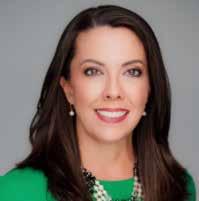 by jamie merrill
by jamie merrill
“It’s not necessarily the length of our life that determines our legacy, it is more the length of the shadow of our influence that defines what legacy we leave behind” - Boyd
I bet if I asked most people what their legacy is, they wouldn’t be able to generate a quick response because people don’t often think about their legacy. You see, legacies are a funny thing. It’s not something that often comes to mind or is even talked about. In fact, people that leave the greatest legacies may not think about it often either, but they do think about the impact they make. Trying to think about what people will say about you or will think about you after you’re gone can create anxious feelings. Why? Well, as we take a closer look into what we desire our legacies to be, we can’t
help but to examine ourselves in the current state, self-reflecting on if that is being achieved. You write your legacy every day, however far too often, you may not think about your ‘shadow of influence’ until after it’s too late. Ask yourself a question, if you intentionally began to think about your shadow of influence and the legacy you want to leave behind each day, would it influence your decisions, behaviors, and actions differently?
Intentionality is defined as “the quality of mental states (thoughts, desires, beliefs) that consist of and are being directed toward something”. Intentional living is the application or art of making and owning our own choices before our choices own us. Intentional living is being specific about what you do or do not do, how you do it and what you allow in your life,
always keeping the end in mind. Ever heard someone complaining about their situation and thought to yourself… well, you’re the one who got yourself in to that? While it’s true, and easy to spot in others, many people struggle with taking responsibility for their actions or can’t see within themselves the cause and effect. But there is a way out! Taking time to be intentional, detailing the shadow of influence you want to cast, and comparing that to what you are currently casting. I won’t lie, this can be a trying exercise, but a truly beneficial one that will require some altered choices and actions to get your desired result. So why not do it? Why not start with the end in mind, and create your legacy the way YOU want to be remembered, instead of someone else creating it for you?
Baily
“IT’S NOT NECESSARILY THE LENGTH of our LIFE THAT DETERMINES OUR LEGACY , IT IS MORE THE LENGTH OF THE SHADOW OF OUR INFLUENCE THAT DEFINES what LEGACY WE LEAVE BEHIND.”
- BOYD BAILEY
Our 1st annual FSLA Leadership Academy did just this, and the impact was astounding. Each member of the academy spent dedicated time determining ‘who’ they are right now, ‘where’ they are right now and ‘where’ they want to go. Trust me, this was not an easy exercise, as they spent much time self-reflecting and digging deep within themselves to determine their ‘real’ person. From there, they began writing their legacies and specifically identified what their desired shadow of influence was? Ask yourself this, do you associate yourself with your position at work? With your title? With the job you perform? If you do, you’re not alone as many see their value as a person in the work they do. This was true with our leadership
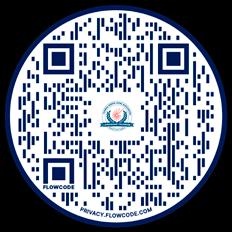


academy also. But they dug deep and found the true meaning of their legacy, which was emotional and overwhelming (both for writer and the group listening). It is a difficult hurdle to cross, moving past the person you are at ‘work’, as that is not how you will be remembered. No one is going to name your position and title at your funeral (a little morbid, but true). People will remember how you made them feel. Who was important to you and why. What you stood for. Who you were as a family member and friend and the memories and times they cherished with you. People will remember where you spent most of your time, and what made you laugh. They will remember you, as a person. If thinking about those things doesn’t bring a flood
of emotions to your surface, dig deeper. Your legacy should be emotional, personal, and intimate as it is only for you.
Going through this exercise forces you to look inward and act outward, syncing the two. It can challenge you to change where you spend your time, how you communicate, how you respond and even who you spend your time with, but it is one of the most valuable exercises you will ever go through. BE the person you want to be remembered for. Cast the shadow of influence you are destined to cast and allow that influence to be the reminder every day.
Ever increasing insurance and litigation costs continue to increase ALF operational costs. Today, the senior living industry needs the Florida Legislature’s help to survive. Statutory reforms are necessary to secure reasonable and measured solutions to stop this cycle and drive down insurance premiums.
Florida Senior Living Association (FSLA) is proposing to update Ch. 429 (ALFs) to provide assisted living facilities with the same procedural safeguards that exist for nursing homes:
• Ensuring Residents Can Pursue Lawsuits Against Those Directly at Fault: Specifies the class of persons who may be sued in the initial pleading for negligence, or a violation of a resident’s rights, such as the licensee and its management or consulting company, managing employees, and direct caregivers.
• Specifying How Claims for Damages Are Heard and Selected: Requires a trial court to hold a hearing
jason hand VP of Public Policy & Legal Affairs Florida Senior Living Association
and weigh admissible evidence before a punitive damage motion can proceed. Specifies when a claimant must elect either survival damages or wrongful death damages.
• Utilizing The Regulatory Process to Ensure Judgments Are Paid: Requires payment of a judgment within 60 days, unless agreed upon otherwise, or the ALF is subject to licensure sanction by AHCA.
• Establishing a Workable Framework for Releasing Medical Records: Revises provisions relating to the release ofa current or former resident’s records, specifically identifying who can request records, the types of records provided, and timeline for providing records.

Additionally, FSLA is proposing to update both Ch. 400 (nursing homes) and Ch. 429 (ALFs) to utilize specific, proven procedural safeguards in existing medical malpractice protections available to other health care providers (e.g., hospitals, doctors):
• EQUITY WITH CLAIMS BY ADVANCEDAGED DESCENDANTS: Provides ALFs and nursing homes with medical negligence protections of limiting noneconomic damages awardable to independent adult children of residents, who often are in advanced stages of life themselves.. Other health care facilities such as hospitals already have these protections.
• Expert Witness Requirements for Same Area of Practice and Experience: Revises the ALF and nursing home statutes to strengthen expertise and experience requirements necessary to qualify as an expert witness.
• Parameters for Admissibility of Highly Prejudicial Evidence: Prohibits the use of previous, unrelated AHCA surveys to establish general wrongdoings unrelated to the case at issue in ALFs and nursing homes.

FLORIDA ranks: WORST in ALF claim frequency at .70 per 100 occupied units
WORST in ALF loss rate at $1,496 per occupied unit
3rd WORST in ALF claim severity at $214,765

MARCH 27-28, 2023
TALLAHASSEE, FLORIDA

Advocacy Days 2023 was a huge success thanks to the inaugural class of FSLA’s Leadership Academy participants visiting legislators and advocating on behald of senior living. A great time was had by all!















During the most recent Argentum Public Policy Institute meeting in Washington D.C., Argentum shared the latest “State of the State” demographic information for senior living (e.g., assisted living, memory care, independent living, and CCRCs). This data included the number of ALF residents per state, the industry’s economic impact, and impact from Medicaid and productivity savings, as well as the total number of assisted living workers that will be needed by 2040.
Florida is the second most impactful state for the senior living industry, behind California. For example, Florida’s senior living industry:
• Currently serves almost 150,000 residents, residing among 3,000 ALFs, 767 memory care communities, 700 independent living facilities, and 75 CCRCs.
• Generates a $14.5 billion economic impact, consisting of 57,000+ jobs directly supported, 53,000+ jobs indirectly supported, $647 million in government revenue, and $82.4 million in social responsibility. Florida’s senior living economic impact is greater than hotels, accounting, and electric power distribution.
• Saves $9 billion annually in Medicaid entitlements by providing a private pay alternative to expensive, taxpayer funded nursing homes (estimating that 61% of residents would be forced to skilled nursing facilities if ALFs were not an option).
• Enables over $17 billion in productivity savings by allowing the families to remain in the workforce, as opposed to taking time off or leaving their job to take care of their loved ones.
Unfortunately, with the good comes the bad. Projections show that the struggles with Florida’s senior living workforce shortage will likely get worse. Florida currently has the highest percentage of seniors in the nation. This will continue to increase, and by 2040 more than 25% of Florida’s population will be over 65, resulting in a need of over 230,000 ALF staff alone (an increase of over 170,000 jobs).
Over 90% of senior living residents report high satisfaction. Over 85% of families report high value in senior living. 95% of senior living residents feel safe. Finally, moving to senior living resulted in 70% of seniors reporting an improved health outlook and 75% reporting a improved quality of life.
To keep assisted living viable, the senior living industry will need: increased investments in workforce development, including existing recruitment, training and retainment programs and engaging foreign-born workers; and increased access and affordability of senior living so more Americans can plan and meet their caregiving needs.
1 The number of seniors who reside in senior living (including assisted living, memory care, independent living, and continuing care) communities
2 The total value of direct spending as well as the indirect and induced spending associated with assisted living operations
3 The amount of spending incurred by Medicaid if assisted living were not an option (assumes 61% of seniors would be forced to skilled nursing facilities (SNFs)
4 Assisted living allows more family members to remain in the workforce, reducing lost productivity and absenteeism ($43 9 B direct impact, $221 B lost productivity)
5 The total number of assisted living workers across, across all occupations, that will be needed by the year 2040.
6 The total number of long-term care workers, across all occupations, that will be needed by the year 2040.
Seniors Served
Residential Communities
Florida has the highest percentage of seniors in the nation. by 2040, more than 25% of florida’s population will be over 65.
145,554
3,131
Caregivers & Other Employees 111,100
Workers Needed by 2040
232,800
Economic Impact $14.5 Billion
Most everyone has heard this saying, but I find that people fall into two different camps when it comes to embracing this sentiment. Many of us fall into the “absolutely – this is what we strive for” camp, while others roll their eyes and say, “yeah, right.”
Senior living staff often identify barriers to making compliance a focal point including the need to focus on census; staff turnover, vacant positions or reliance on agency staff; running out of time every day; excessive meetings; time spent handling resident and family issues; lack of ownership support or management buy-in; or a general feeling of being overwhelmed.
Operating as if every day is survey day can reduce anxiety and chaos, build confidence amongst
your team, provide a source of satisfaction and celebration for the team, and provide a vehicle to detect and correct deficient practices in the community when they happen. Communities should have internal mechanisms to assess processes and policies and to ensure that laws and rules are being followed rather than to default to regulators to identify problems. While it is the regulator’s job to identify deficient practices, it is also our job and when compliance is a priority, the likeliness that any systemic issues exist at the time of regulatory inspections is greatly reduced.
• Prioritize resident care, supervision and well-being.
• Establish daily, weekly, monthly, quarterly and annual tasks that include regulatory compliance as a focus. Extend this beyond the leadership team and help each team member understand why and how their daily actions contribute to the success of the team, the community and to regulatory compliance.
• Establish a learning culture and provide the tools needed to facilitate each team
member’s success. This may include training, education and coaching, collaborative problem solving and regularly establishing commitment to a shared vision.
• Communicate, communicate, communicate. Remember, communication includes listening and observing. Observe staff workarounds. This is often a sign that they need support to meet expectations because they are missing tools to do so in keeping with the existing procedures and policies.
• Identify gaps and establish or re-establish systems to address the gaps. No one wants to be putting out daily fires. When we find ourselves doing so, this can be a signal that gaps exist.
• Celebrate success. Every day.
 monica wilson , ms ICEBridge, LLC
monica wilson , ms ICEBridge, LLC
Can one of our community’s nurses provide the six (6) hour training for assistance with the self-administration of medication training for our unlicensed staff?
The training provider must be a Registered Nurse or a Licensed Pharmacist – these are the credentials required to provide training for assistance with the self-administration of medication. The training provider must ensure the trainees demonstrate in person an understanding of how to provide assistance in accordance with regulatory guidelines. The content to be covered and a minimum list of the demonstration skills is identified in section 59A-36. 011 (6), F.A.C.
monica wilson , ms ICEBridge, LLC
Have a question about assisted living operations? Ask Monica: Monica@icebridgetraining.com
Monica Wilson is registered with the Florida Agency for Health Care Administration (AHCA) as an Assisted Living Core training provider and with the Florida Department of Elder Affairs as an Alzheimer’s disease and related disorders training provider. She is an experienced administrator, trainer, facilitator, and educator with a passion for older adults, technology and connecting people and processes.
A surveyor recently informed me that we must record bed holds on the admission and discharge log. I don’t have that understanding – what is the requirement?
When a bed hold is in place, discharge of the resident is not required, and thus, is not included on the admission and discharge log. If a bed hold is discontinued because the resident is unable to return to living in the assisted living community and subsequently the resident is being discharged, the log must be updated with the date of the discharge, reason for discharge and the location to where the resident is being discharged.
Can we open residents’ mail and packages? “But, we want to be sure . . .”
I receive this question more often than expected. Florida’s Assisted Living Facilities Act ensures in the Resident Bill of Rights each resident’s civil and legal rights and also specifically addresses the right to unrestricted private communication including receiving and sending unopened correspondence.
We are committed to offering excellent education opportunities. You can access ALF Core Training, Professional Development, Continuing Education, Webinars, Cocktails and Conversations, Upcoming Events and more on our Education page! floridaseniorliving.org/education


With an estimated 800,000 preventable medication-related injuries occurring every year in U.S. long-term care (LTC) facilities, preventing medication errors is a top priority for senior living providers. By harnessing the power of rapidly evolving technologies, along with the right combination of people, skillsets, and processes, providers are reimagining medication safety strategies to significantly reduce the frequency of medication errors in their communities.
Medication errors not only have the potential to seriously harm residents but due to increased cost of treatment, they can result in substantial economic burden for both residents and operators. Most medication errors occur due to human mistakes and can happen during any stage of the medication management process, including data entry, transitions in care settings, medication administration, or prescribing. Common types of medication errors include prescribing a dose that is too high or too low, administering the wrong medication to the wrong resident, omitting a dose, or administering the wrong strength
or form of a drug. Opioid pain medications, antidiabetic agents, blood thinners, and antiplatelet agents are the most common drug classes associated with medication errors, accounting for over 50% of emergency room visits for medication-related adverse events in Medicare patients. When embraced by the multi-disciplinary team, technology can play a crucial role in improving medication safety by reducing errors, streamlining processes, improving communication, and providing actionable data and insights.
Senior care pharmacists are key members of the multidisciplinary team, bringing their expertise of the unique medication-related needs of older adults. With new technologies at their disposal, they can be one of the best resources for helping senior living operators improve the safety of medication management in their communities. Even when residents receive prescriptions from multiple doctors, by having real-time access to the community’s electronic health record (EHR) and the LTC pharmacy’s dispensing system, LTC pharmacists have a comprehensive view of residents’ medications,
allowing them to ensure that drug regimens are safe and appropriate. They can identify concerns such as inappropriate dosage, drug interactions, or potential adverse reactions and intervene early to prevent small errors from becoming serious health issues. Pharmacists’ interventions can now be communicated to community staff or prescribers through HIPAA secure messaging applications and online pharmacy portals. These clinical interventions can be tracked for analysis and the resulting data can help operators identify highrisk areas and focus their quality improvement initiatives.
In addition to leveraging the expertise and resources of their senior care pharmacists, senior living operators today have access to a range of medication safety innovations. By embracing the technologies provided by their EHR
vendor, including the integration between the EHR application and the LTC pharmacy’s dispensing system, they can enhance the accuracy of medication profiles. Browser-based pharmacy portals offer insight into the inner workings of the LTC pharmacy, including realtime tracking of medication orders. Nursing staff can now see the electronic prescriptions received by pharmacy, clarify orders with pharmacy staff via secure texting on their smart phones, and view proof of delivery signatures for medications delivered by pharmacy. Smart packaging technology with barcode scanning improves efficiencies while reducing medication administration errors. Barcode scanning also streamlines the medication destruction process, saving time and reducing
the risk for drug diversion when controlled medications are stored pending destruction. With these technologies providing unprecedented transparency into pharmacy processes and improved accuracy during medication administration, senior living operators are revolutionizing their approach to medication safety and utilizing data insights to support their initiatives.
The future of medication safety in senior living lies in embracing cutting-edge technologies such as integrated EHR systems, barcoded smart packaging, and applications that provide realtime order tracking and improved pharmacy communication. These tools provide pharmacists and community staff with transparent
medication management processes and a comprehensive view of residents’ medication profiles, enabling them to proactively improve safety. Working with a knowledgeable LTC pharmacy is crucial to successfully implement these technologies and leverage the data and insights they provide to support initiatives and measure success. By adopting these technologies and partnering with an experienced LTC pharmacy, senior living operators are taking a proactive approach to reducing medication errors and enhancing the quality of care in their communities.
matt depenbrock Business Development Leader Guardian Pharmacy of FloridaThrough its seven local pharmacies, Guardian’s pharmacies provide outstanding client service and resident care to long-term care communities, including assisted living and skilled nursing, group home, behavioral health and to organizations that serve individuals with intellectual and developmental disabilities across the entire state.
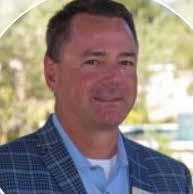
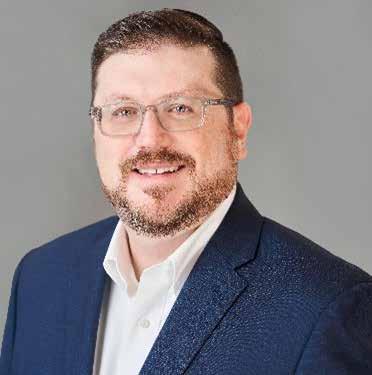 by aaron fish
by aaron fish
In today’s environment of rising inflation, expanding operating costs, and ongoing labor challenges, operators are looking for ways to balance between driving revenues, managing margins, and controlling expenses. The obvious approach has and will be to make the tough choice to raise rates more than they have in the past. But at what cost to residents and prospects? Will this impact the slow but steady census growth we saw in 2022? It’s obvious that unless current economic trends start to change, we are going to have to become creative about revenues. The way the industry views generating revenue needs to shift and creating new and reliable revenue streams will be key.
Why do we need additional revenue streams? As we look at rent rolls, what we find is mixed news of recovery, stagnant census growth, and rent increases. With providers looking at rate increases of 7% - 13% in 2023, there are going to be tough conversations as marketers talk about higher rates, and executive directors work to close the proverbial back door with current residents. And expense struggles aren’t going
away. Beth Burnham Mace, chief economist and director of outreach at NIC recently noted,“Rent growth, while rising, has not been sufficiently able to offset expense growth for many operators. As a result, net operating income has been hard to achieve for many — but certainly not for all — operators of senior housing properties.”1 This is why we need to create new revenue streams that can support our communities and their operations.
But there’s another approach, and it is one that is starting to get some traction with forward thinking companies. These operators are looking at the concept of “retailization”. But what is this and why do we need to do it? It’s actually a trend that is prevalent in other industries that senior living needs to get behind.
What is “Retailization”? The term “retailization” means “optimizing sale(s) by connecting brands to shoppers through the power of retail thinking.”2 For senior living operators, it requires a dramatic shift in the approach to our business. It requires the shift away from managing
expense centers, and treating them as business units that can and do generate revenue. There are plenty of examples and models for the industry to emulate, and the best place to look is the hospitality sector. Hotels, country clubs, and even restaurants are sectors of the hospitality industry that have and continue to be constantly revamping and retooling their business model to meet the changing markets they operate in and maintain their revenue (and profit) potential. And senior living has three of these “untapped markets” that they can and should start capitalizing on to generate revenues that can be supplement
What are the “hidden markets” to capture additional revenue? For as long as I have been in the industry, any revenue that was collected outside of rent and care charges was not a focus or prioritized. Rather those areas were typically seen as expenses to be managed. But by instilling a profit mindset with these “ancillary” directors, you can tap into readily available revenue streams. Here’s the breakdown of the three readily available streams:
• The Captive Market: Employees
• The Service Creep Market: Residents & Families
• The Main Street Market: External & New Customers
Viewing these groups as possible sources of revenue with your hospitality program (food & beverage, lifestyle/engagement, concierge) can open your community to not only enhanced revenue streams, but will inherently improve their quality as they are now being required to be of a higher quality to demand a price tag. The limit on how these markets can be tapped and your ancillary services maximized are really only limited by the quality of the teams managing them and the value placed on creating revenue by the corporate office.
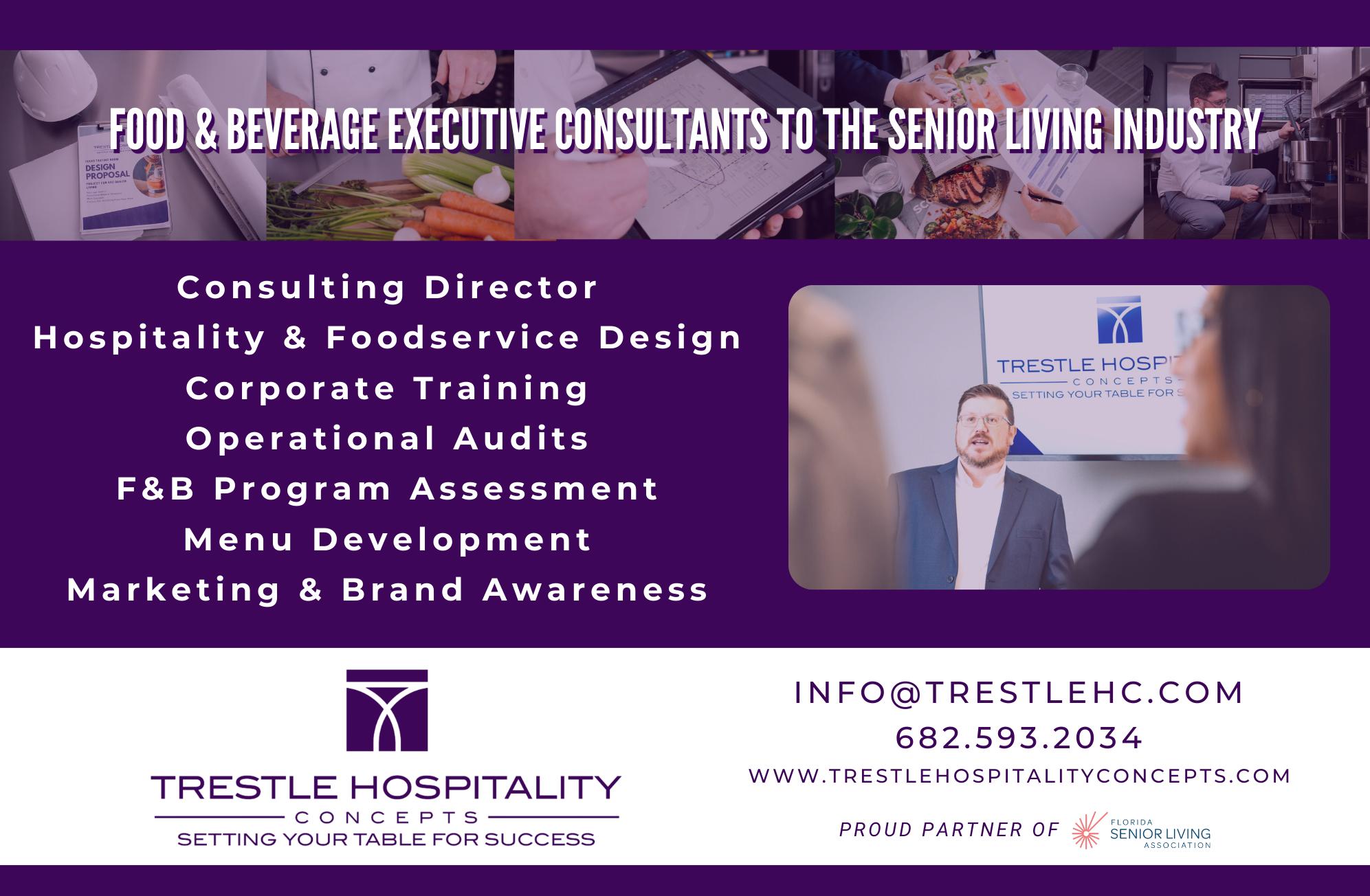
What kind of Impact can these streams have on operations? In addition to the obvious revenue impacts that this can have, there are other considerations. Developing these programs and offerings into sources of consistent revenue requires a laser focus on operational excellence. The steady increase of revenue will have an impact on the asset value of a community as well. In one example of this, an operator was exploring the addition of a permit to add alcoholic beverage services to an independent living community in Texas. The addition of that 2 year permit costing $10,000 was estimated to increase the total value of that community by $250,000. This is before the addition of the revenue stream created by sales from the
new program, which can also add additional value. Owners & investors can see valuations and overall NOI increases with the retailization of these programs, as well as the quality of them also improves census stabilization by providing a better product.
The demographics of our customer base are shifting and our customers will soon have an expectation of higher quality services and the willingness to pay for the additional services if the value is there. So it’s clear - the time to evaluate and implement this approach is now.
EARN 6 CEUs | COST $159



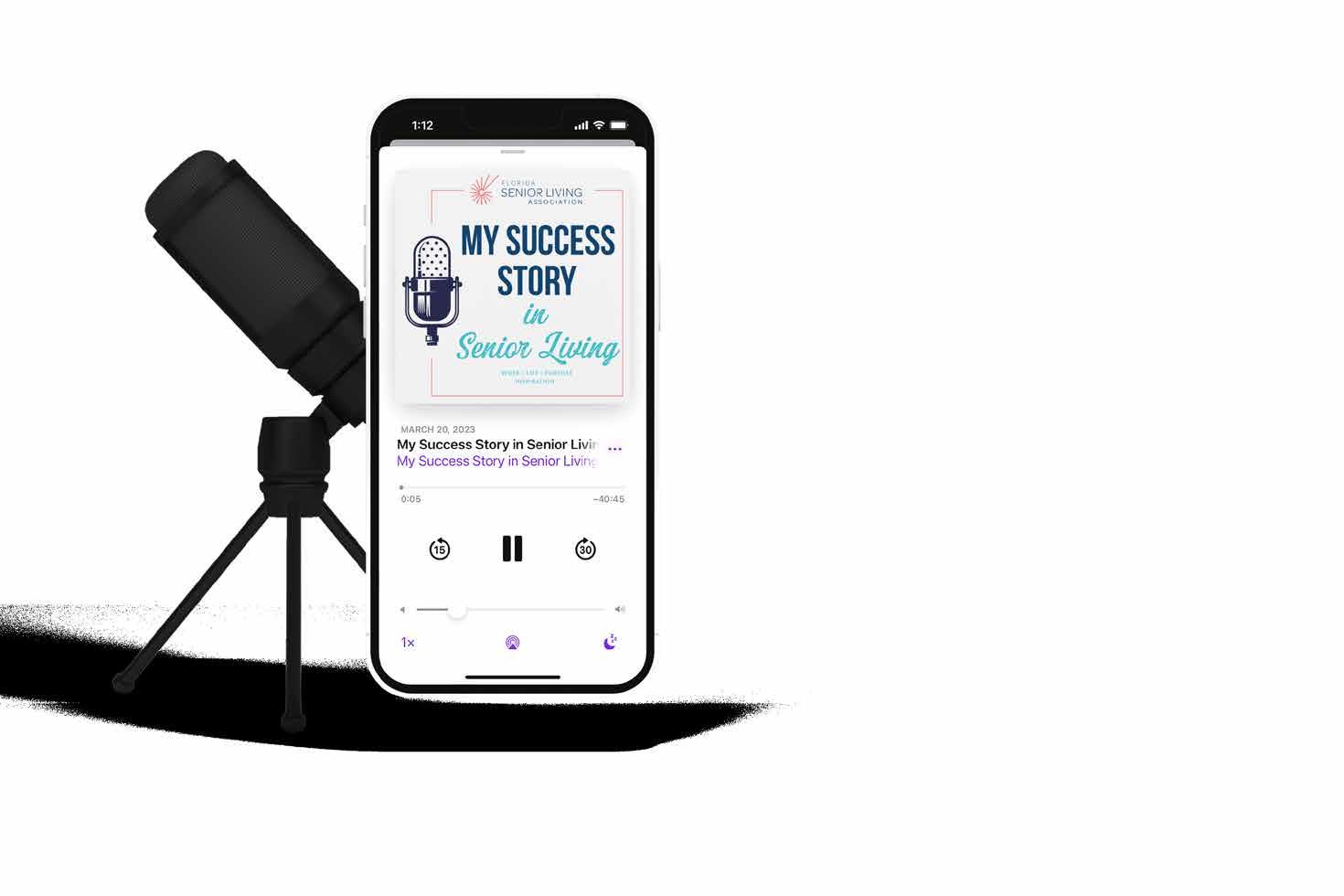

Breakfast + Lunch Included
Register Today floridaseniorliving.org/education



We have all the benefits and services your residents need!




The largest number of attending Psychiatrists, APRN’s with Psych Certification, Psychologists, and Licensed Clinical Social Workers in Florida.


All insurances/payor sources accepted. We do not bill facilities/residents for our services-meaning we give millions in free healthcare annually.
24/7 on-call clinical support answered by our prescribers.
Established strategic partnerships with other behavioral groups with the goal to have no lapse in coverage.
For more information scan this QR code

The expectations of senior living operators have never been greater. Rising acuity levels, the need for personalized care, ongoing workforce challenges, and growing expenses have made it hard for today’s senior living organization to meet the demands being placed upon it. Fortunately, digital transformation presents a significant opportunity to address these challenges while also setting our organizations up for future success. Just as technology has altered our lives in so many ways over recent years, it’s also transforming the senior living sector – from financial and business operations management to delivering personalized, quality care tailored for individual residents at scale. Today’s modern leaders must be prepared to embrace a more unified approach to operations and navigate the ever-expanding technology landscape.
Let’s break this down. What is Digital transformation? The LeadingAge Center for Aging Services Technologies (CAST) defines digital transformation as “the process of using digital technologies to create new or modify existing organizational processes, culture, and resident and staff experiences to meet changing business and market requirements.” You see, digital transformation is more than moving from paper to spreadsheets or spreadsheets
jackie ramieri Founder & CEO, CareWork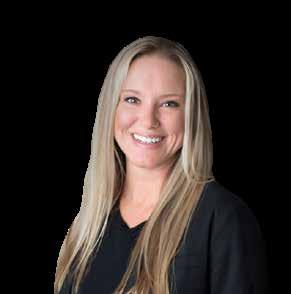
CareWork is a Unified Operations Platform designed specifically for Senior Living and Long-term care enabling operators and their teams to work quickly, more efficiently and with more insight. www.mycarework.com
to systems, it’s a strategic and systematic approach to greater efficiency. Digital transformation is a key driver to the ultimate goal – unified operations.
Over the last few years, innovation and the use of technology have increased in senior living. Operators subscribe to multiple software solutions to manage everything from clinical and business operations to ancillary services. Additional technology is being layered on top of an already crowded field of systems to solve single-point problems like scheduling automation. The result can leave providers overwhelmed and sensing this critical journey to digital transformation may just be placing additional burden on an already depleted workforce. The answer is that the journey does not end with siloed solutions. Robert Kramer, NIC CoFounder and Strategic Advisor pointed out in a recent article, “The next phase of innovation will be connecting the dots, moving from these individual siloes to longitudinal solutions that enable communication, coordination, and meaningful integration to provide a complete health and wellness experience for the resident.”
The keys of success are found in combining digital transformation and unified operations. You see, unified operations are more than data and technology integration or dashboarding tools – we’re talking about integrating processes and realigning information from sources outside the systems (spreadsheets and documents) into
the ideal big picture data state. Unified operations uses big picture data to automate manual processes, create smarter workflows to enable more efficiencies, and provide key indicators and triggers for proactive vs. reactive decision-making. When digital transformation and unified operations are implemented together, senior living organizations will see increases in productivity, reduced labor costs, improved resident and employee experiences, reductions in waste, and countless opportunity cost savings.
As you begin to explore what unified operations might look like for your organization, start at the beginning. What manual processes take up the most time? What goals do we want to achieve, and how are we managing those outcomes today? Will my core systems allow integration with a unified platform? Identifying pain points and operational excellence strategies through the lens of unified digital transformation allows you the opportunity to define the critical tools needed to realize true operational efficiency.
Unified operations platforms have existed in other industries for a long time. We in senior living have only just begun to understand the power of revolutionary technology. The good news? This innovation is happening today and will continue to grow as our industry focuses on providing exceptional care in the safest environment for our aging population.
Please join the FSLA team and CareerSource Florida for a FREE Lunch & Learn event! Complimentary lunch will be provided.
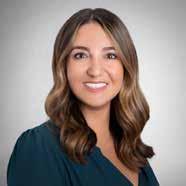
One CEU will be available for the presentation of “Burnout to Balance.”

Upcoming Regional Meetings


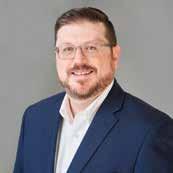


BROWARD COUNTY
May 2, 2023 11:30am-1pm
HIGHLAND COUNTY
May 3, 2023 11:30am-1pm
POLK COUNTY
May 4, 2023 11:30am-1pm
BAY/GULF COUNTIES
June 1, 2023 11:30am-1pm
COLUMBIA COUNTY
June 1, 2023 11:30am-1pm
13465 PASTEUR BOULEVARD PALM BEACH GARDENS, FL 33418 561-227-0065
Assisted Living Facility License #13239
•24/7 on-site licensed nurses and full-time management nurses
3490 THRIVE DRIVE NAPLES, FL 34105 239-354-7081
Assisted Living Facility License #13285
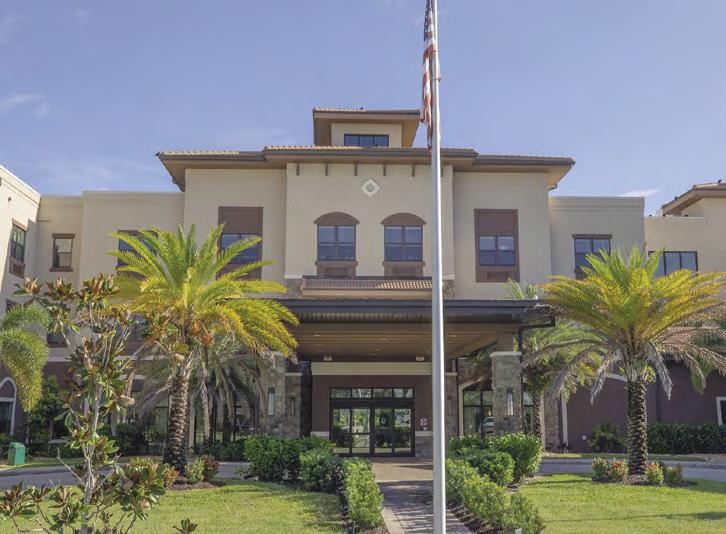
• Delicious, nutritious meals prepared by our Taste of RUI Executive Chef, served in a restaurant- style setting with tableside beer and wine service
•A full life enrichment calendar
• LUXE Unlimited – Full service salon and spa
• RUI FIT programming and gym
•Physical, occupational and speech therapy on-site
• Housekeeping and laundry services
15800 B EACHWALK BO ULEVARD FORT MYERS, FL 33908 239.349.3769
Assisted Living Facility License #13074
• Scheduled transportation
• All utilities including cable and Wi-Fi
• RUI University programming and classroom for continuing education
• Leash on Life – pet concierge services
• Spacious studios, one bedroom, and two bedrooms many with full kitchens
• Residential living, assisted living and Inspiritás – memory care
For more information, and to schedule a tour, call an RUI community today.
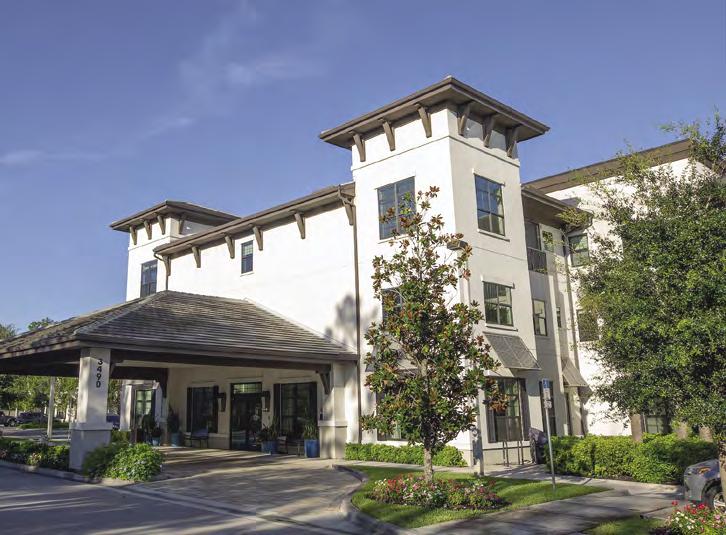
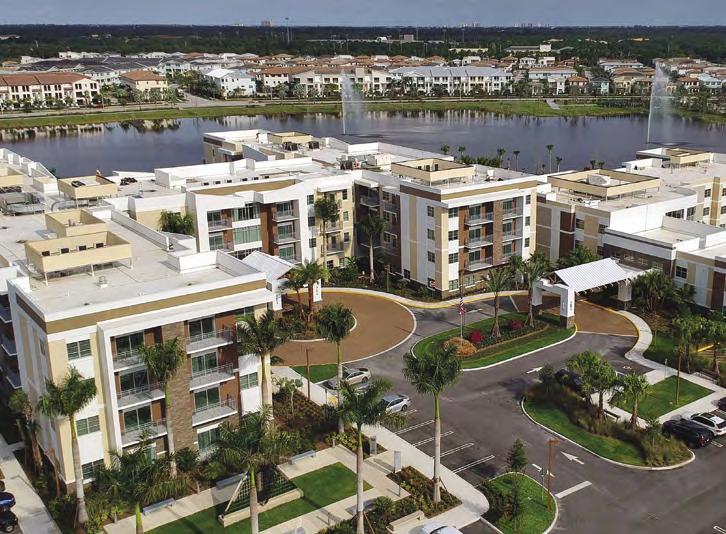
1060 CLARITY POINTE DRIVE TALLAHASSEE, FL 32308 850-219-2900
Assisted Living Facility License #13113
™ of Pensacola
8601 N. DAVIS HIGHWAY PENSACOLA, FL 32514 850-898-3334
™ of Stuart
500 S.E. INDIAN STREET STUART, FL 34997 772-403-0573
Assisted Living Facility License #13225
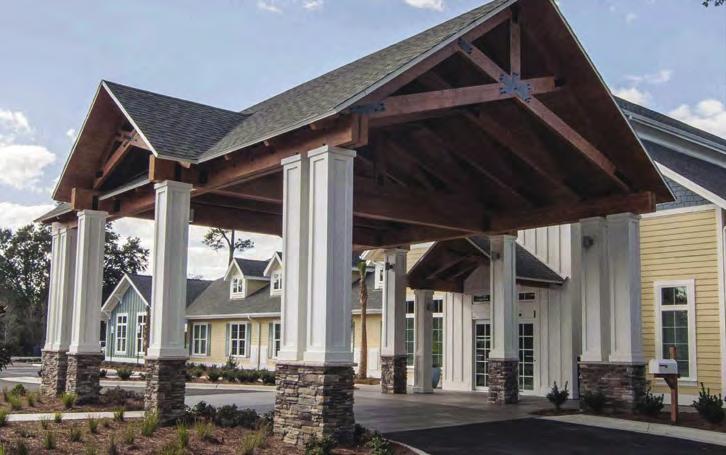
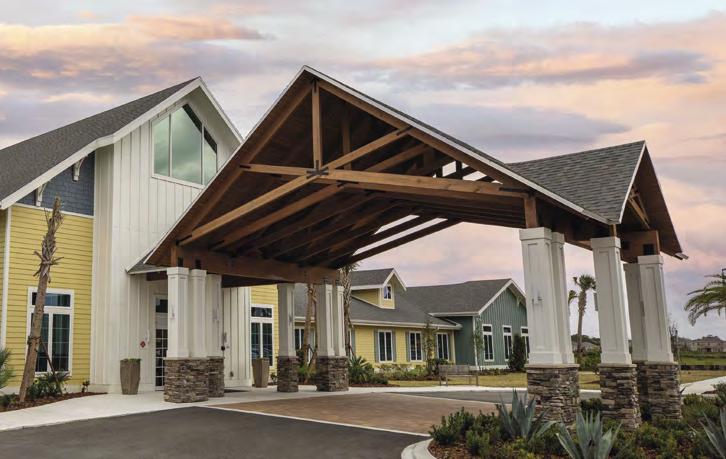
2395 MINTON ROAD
WEST MELBOURNE, FL 32904 321-220-0295
Assisted Living Facility License #13553
™ of Wildwood
7330 POWELL ROAD WILDWOOD, FL 34785 352-254-7550
Assisted Living Facility License #13436
TH E AT COCO NUT CREE K
MEMOR Y CARE
5461 JOHNSON ROAD COCONUT CREEK, FL 33073 954-246-7000
Assisted Living Facility License #13339
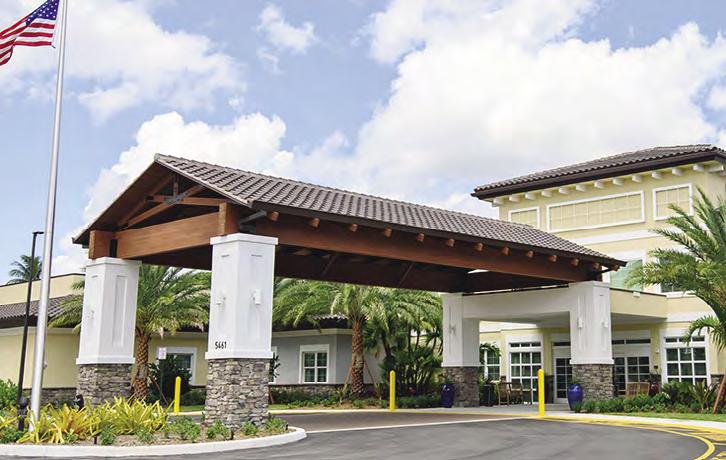
Our Inspiritás “neighborhood” is secured for resident safety yet still offers beautifully designed private garden and courtyard areas. It hosts a variety of Life Havens, designated areas to experience music and art and interactive Wall Art. These settings allow residents to explore and engage with the scenes that stimulate memories and topics of conversation. Our goal is to ensure each resident receives compassionate care to meet their emotional, social, physical, spiritual, and cognitive needs. Above all, we provide our residents with smiles, personalizedattention, encouragement, and family members with peace of mind.
• 24/7 on-site licensed nurses and full-time management nurses
• Outdoor enclosed courtyard with garden beds, walking paths and covered patios
• A full life enrichment calendar
• LUXE Unlimited – Salon
• Physical, occupational and speech therapy on-site
• Housekeeping and laundry services
• Zero Entry Showers and automatic lights in bathrooms
• Private studios and companion suites
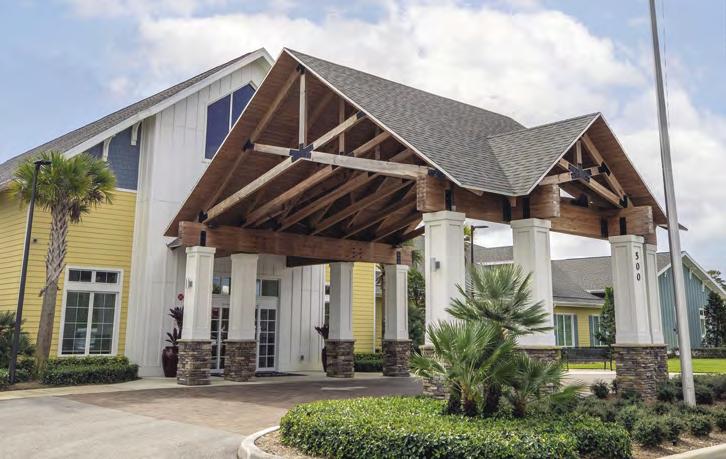
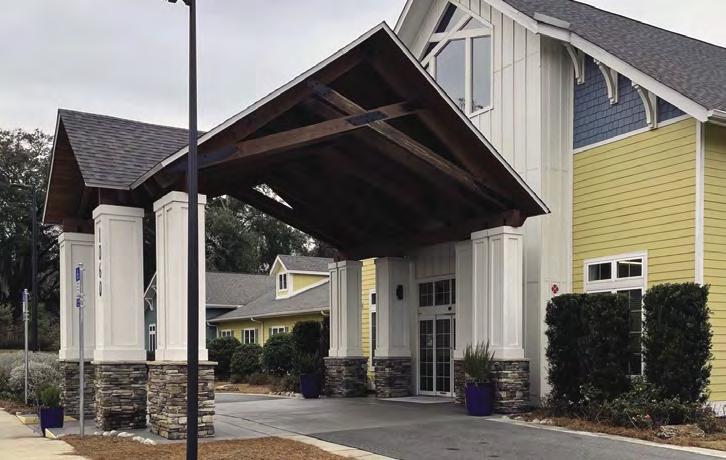
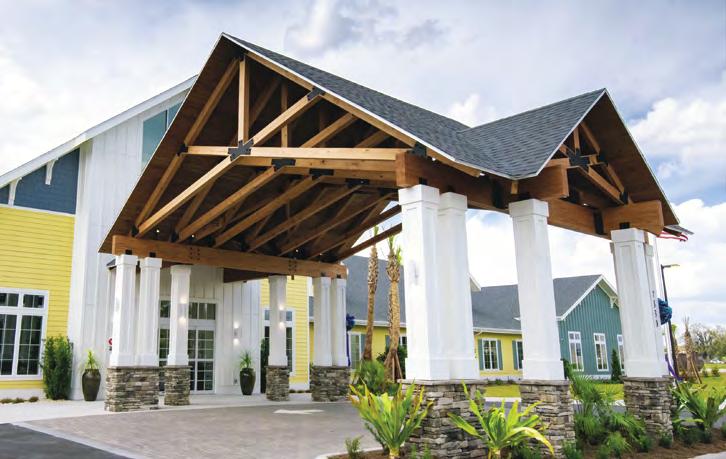
Retirement Unlimited, Inc. (RUI) was founded in Virginia in 1982 by Horace Fralin and Elbert Waldron who, together, had a pioneering vision that saw the need for senior housing in a variety of settings, including multi-family and skilled nursing facilities, coupled with common areas for seniors to congregate and socialize. Today, RUI is still owned and operated by the Fralin and Waldron families, and is led by the third generation of Fralin’s and second generation of Waldron’s. RUI currently manages 12 senior living communities in Virginia and nine in Florida, with additional projects in development. RUI’s communities offer independent living, assisted living, and Inspiritás - memory care with a tradition of “delivering a lifestyle our residents have earned and deserve”. RUI prides itself on offering quality care options, a full spectrum of life-enrichment programs and amenities to meet the needs and wants of their residents.
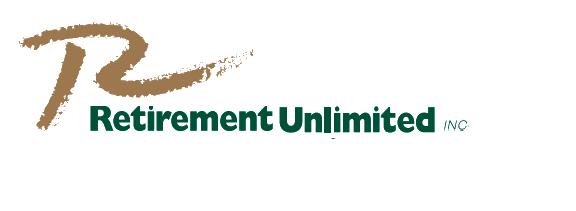
RUI communities also offer numerous amenities, including both casual and fine dining, concierge service, salons, scheduled transportation for appointments and events, on-site therapy and wellness clinics, and a variety of activities designed to meet every resident’s emotional, social, physical, spiritual, and intellectual needs. These amenities form the foundation of RUI’s signature programs designed to provide residents with a premiere experience and a life truly enriched. They include:
1. Taste of RUI – this fine-dining, restaurant-style experience combines sophisticated, elegant meals with exquisite cuisines in dining rooms featuring luxurious settings and an atmosphere driven by customer service. Additionally, more casual dining options are also available.
2. RUI University – partnering with local colleges, universities, and museums, RUI University
Fellows share their expert knowledge through this free, lifelong learning program for residents and the community.
3. LUXE Unlimited Salon and Spa – licensed professionals offer hair and nail services, skin care treatments, and massage therapy, and an exclusive brand of retail and apparel products.
4. RUI FIT – this exclusive fitness and health program empowers residents to have fun while staying active through programs, a gym, and in collaboration with on-site physical, occupational, and speech therapists.
5. Leash on Life – a dog park and pet concierge services that include pet walking, bathing, feeding, and cleanup, because all RUI communities are petfriendly.
6. Care Impact – provides extra assistance to residents and family members with Ambassador and Companion Care Services that deliver personal assistance and guidance.
Working with a venture capital partner, RUI assumed management of its first two Florida communities in 2021 when it began managing day-to-day operations at the established communities of Seaside at Fort Myers – formerly Thrive at Beachwalk – and Seascape at Naples – formerly Keystone Place at Naples Preserve. The Florida communities represented two “firsts” for RUI, in that it was the company’s first expansion outside of Virginia and the first time it managed communities it hadn’t also built.
“Since our founding in 1982, RUI’s passion has been providing quality care, excellent customer service, and a luxurious lifestyle to the senior population throughout Virginia,” explains Doris-Ellie Sullivan, RUI President. “After focusing on and perfecting that mission in Virginia for 40-plus years through diverse enrichment programs, social experiences, and levels of care in comfortable, elegant settings, we’re excited at
the company’s continued growth and the opportunity to bring our distinct senior living experience to Florida.”
For residents with dementia, Inspiritás - Memory Care offers an innovative and compassionate approach to a superior, quality living experience. Meaning “to infuse spirit and enliven quite so,” Inspiritás is RUI’s all-encompassing memory care culture and environment. Here, residents are set up to flourish, with a focus on wellness, life enrichment, diet – and most importantly –engagement for the resident and their families with the community’s environment and activities. The Inspiritás team focuses on what the resident can do for themselves, and provides thoughtful support with knowledgeable coordination of services in spacious, inviting, state-of-the-art communal areas and private units, celebrating residents’ lives while maintaining their safety and comfort.
A new addition to RUI’s memory care offerings is the all-female Inspiritás Memory Care option. This designated neighborhood within our memory care will be only for women and provides specific programing and engagement catered to our female residents. This all-female wing was first introduced at RUI’s Seaside at Fort Myers and was created by our expert staff of memory care professionals to offer a unique and enriching experience, with care and signature program planning tailored specifically to the needs our female residents and their families, all within a private and secure dedicated portion of our community.
Retirement is a life stage meant to be treasured and enjoyed. RUI strives to make these years rich with new experiences, while providing maintenance-free, independent-living that residents want, coupled with the thoughtful service they deserve.
michele thompson Regional Vice President of Operations Retirement Unlimited, Inc.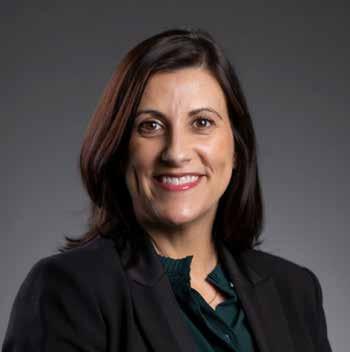
Marketing to today’s seniors is problematic. Most times the messaging is focused on how a product or service aids a senior’s daily living rather than how it enhances life. That’s because marketing is generally created from the perspective of a caregiver or the adult child of the senior, rather than the senior they are meant to reach. They don’t address the senior’s most important priority - that is, to get the most out of living.
In addition to changing the perspective of your messaging, here are some proven marketing tactics and strategies you can implement.
1. Create an effective website for your facility
Your assisted living facility’s website is often the first impression potential customers will have of your facility, so it’s important to make sure that it makes a good impression. Hence, ensure that your website is:
• User-friendly
• Visually appealing
• Informative
It must also be optimized for mobile phones, as research shows that 92.1% of internet users access the internet through their mobile phones
2. Focus on informational marketing
One of the most effective ways of marketing assisted living facilities is through informational marketing. This involves providing adult children and their elderly relatives with useful and valuable information—such as admission requirements, insurance requirements, and the cost of care— that will interest them. By doing this, you create a relationship of trust with seniors and their adult children, which can ultimately result in them choosing your facility.
There are a number of ways that you can carry out informational campaigns when marketing an assisted living facility. Some of the most common methods include the following:
• Creating blog posts
• Producing e-books
• Publishing articles
• Creating whitepapers
• Sharing helpful videos
• Creating infographics
3. Aim for page one of Google search
When marketing assisted living facilities, it’s important that you always aim to rank on page one of Google search. This is because, according to research, around seventy-five percent of internet users never look past the first page of search results.
Furthermore, seventy to eight percent ignore paid ads that appear on their search results, and seventy-three percent of all internet searches are performed on Google.
The best practices one should follow to rank highly on Google and other related search engines are referred to as Search Engine Optimization (SEO). There is a whole list of blogs dedicated to SEO, but here we will focus on the things that you can do now to immediately improve your ranking on Google, such as the following:
They (the ads) don’t address the senior’s most important priority - that is, to get the most out of living.
• Creating high-quality content regularly
• Optimizing your website’s metadata
• Link-building and back-linking
While it may require some effort and time to rank higher than your competitors, the payoff can be significant in terms of generating leads and sales from interested customers.
4. Manage your brand’s reputation
Brands are intangible marketing concepts that companies use to create an identity for their product or service. In other words, brands help to differentiate one product or company from another. When marketing assisted living facilities, this means that if your brand is associated with providing a good life to your residents, it is likely that generations of families will use your facility.
There are a number of things that you can do to manage your brand’s reputation when marketing assisted living facilities. Some of the most common methods include the following:
• Responding quickly to negative reviews
• Focusing on customer service
• Creating positive content about your facility
• Monitoring social media for any negative mentions
5. Create videos and promote them
Videos are a great way to engage potential residents and show them what life at your facility is like. Long-term care videos are one of the
most effective ways to market assisted living facilities. This is because videos are a great way to engage potential residents and show them what life at your facility is like. Additionally, videos can help you to build trust with potential customers, as they can see that you’re a reputable business that cares about its residents.
There are a number of ways to use videos to market your assisted living facility:
• Creating marketing videos
• Creating resident testimonial videos
• Creating virtual tour videos
• Uploading videos to social media platforms
• Embedding videos on your website
6. Let your current residents be your brand ambassadors
Assisted living facility residents are among the best brand ambassadors a company could ask for. They are loyal, enthusiastic, and invested in the success of the business. Furthermore, they are likely to be trusted by others, as they live in the facility and have interacted with its staff regularly. Residents in assisted living are not there out of necessity but rather because they want to be around other like-minded seniors while enjoying the benefits of your all-inclusive retirement community. This means they are more likely to be open and eager to share their positive experiences with others.
In addition, assisted living residents are typically retired and have time on their hands. They may be interested in volunteering as a brand ambassador
or becoming involved in marketing campaigns. This gives businesses a way to reach potential customers through word-of-mouth marketing.
7. Build a referral network
Word-of-mouth marketing is still considered to be one of the most effective ways to reach potential residents and their families, so it’s important to make sure your referral program is top-notch. Here are a few tips for creating a successful referral network for your assisted living community:
• Make it easy for residents and families to refer their friends and loved ones: There should be a simple process in place that makes it easy for them to share your community with others.
• Offer incentives for referrals: When someone refers a friend or family member, they should be rewarded with something special, like a discount on their next month’s rent or an extra day of paid leave (if they are an employee at your facility).
• Keep track of referrals and reward those who generate the most business for you: This will encourage residents and families to continue referring people to your community.
• Celebrate success: When someone refers a new resident who signs up, make sure to celebrate with them and thank them for their help in spreading the word about your community
katie truelove Chief Creative Guru & Solutions Hero of ktcreative; a boutique marketing agency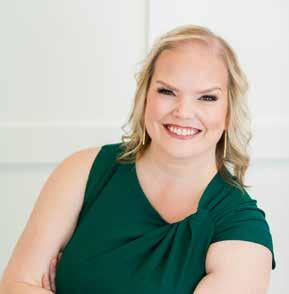
Making decisions about late-in-life care can be challenging, and the options are sometimes confusing. Unfortunately, as we well know, so many people often confuse assisted living and skilled nursing. This mischaracterization affects our industry in many ways, from the media lumping ALFs in with a story on skilled nursing to legislators not understanding the nuances of our business models to families being confused about what long-term care option might be best suited for their loved one’s unique needs.
The term “nursing home” has been used for many years to describe senior residences offering health care, even though it’s often used more broadly than intended. And while assisted living has been part of the senior care industry for more than 30 years, it’s still a relatively new concept in the continuum of care. That means it’s up to us as assisted living providers to educate the public and other important stakeholders about the key differences between assisted living and skilled nursing facilities.
The most significant difference between our communities and nursing facilities is that our residents only need some assistance; they truly don’t need the skilled nursing care offered in a nursing home. Our communities fall in what used to be a significant gap between a senior living at home and not needing any assistance and a senior who needs
skilled nursing care around the clock. Without assisted living, there was no transition between those two extremes; seniors either moved into nursing homes way too early or stayed at home until the need for nursing care was too significant.
We’ve always known each senior’s wants and needs are different, and some may need more care than others. The beauty of our business is our ability to focus specifically on the residents’ needs and wants while still allowing them to enjoy and maintain a degree of independence. Because we can offer such customized care, it really is true that “when you’ve seen one ALF, you’ve seen one ALF…” because we’re all so unique!
Unlike nursing homes, assisted living can offer significant amenities, building that true sense of community. From spas, hair salons, theatres, restaurants and bars to pools, fitness centers, golf courses and personal services, these environments are appealing because they feel like home. The clinical environments in nursing homes simply can’t offer those options.
The process of payments is also substantially different between assisted living communities and nursing homes. Nursing homes usually bill Medicare for medical expenses and Medicaid for the long-term care. On the other hand, most assisted living communities
are private pay. They also may be covered by long-term care insurance or different aid and assistance programs, for Veterans.
Making long-term care decisions can be overwhelming, which is where assisted living can ease the prospect of moving into a new home. Adult children who may have felt anxious about moving a parent into a community may feel better knowing they are moving mom or dad into a neighborhood with amenities instead of a clinical environment. And older adults may not resist this transition as much because they’ll be able to maintain their independence, choice and dignity.
It’s important to understand the relationship between assisted living communities and nursing homes because it is possible a resident may transition from assisted living to a skilled nursing facility if they need additional medical care. Long-term care truly is a continuum that works best when there are graduated options available. By helping people understand each option, we can help ensure senior citizens can make educated decisions about the type of long-term care that is best suited for their needs.
gail matillo , mpa President/CEO Florida Senior Living Association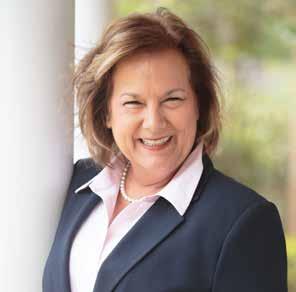

Guardian pharmacists have always put resident safety first. But don’t take our word for it. You’ll gain visibility and peace of mind with data-driven insights into the clinical decisions and interventions our pharmacists make every day to safeguard residents from medication harm with Clinical Intervention—the newest member of our GuardianShield suite of services, engineered to help senior living communities drive their clinical and financial outcomes.
Does your pharmacy deliver more than medicine? Advanced technologies, local expertise, and personal support... that’s the Guardian difference.
Northwest Florida 850.718.7651

Tampa 727.366.6766
Jacksonville 904.345.4304
Orlando 863.670.7554
Southwest Florida 727.366.6766
Daytona 386.944.6201
Learn more at: guardianpharmacy.com/guardianshield
Southeast Florida 561.756.3909
Founded
Because of our extensive experience and relationships in this risk specialty area we have an exclusive and proprietary program with Lloyd’s of London allowing our clients to access some of the best products specific to their insurance coverage needs
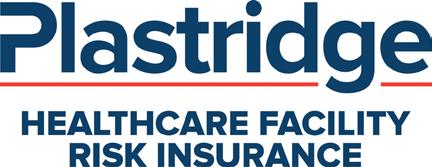

We’re here when you need us.
